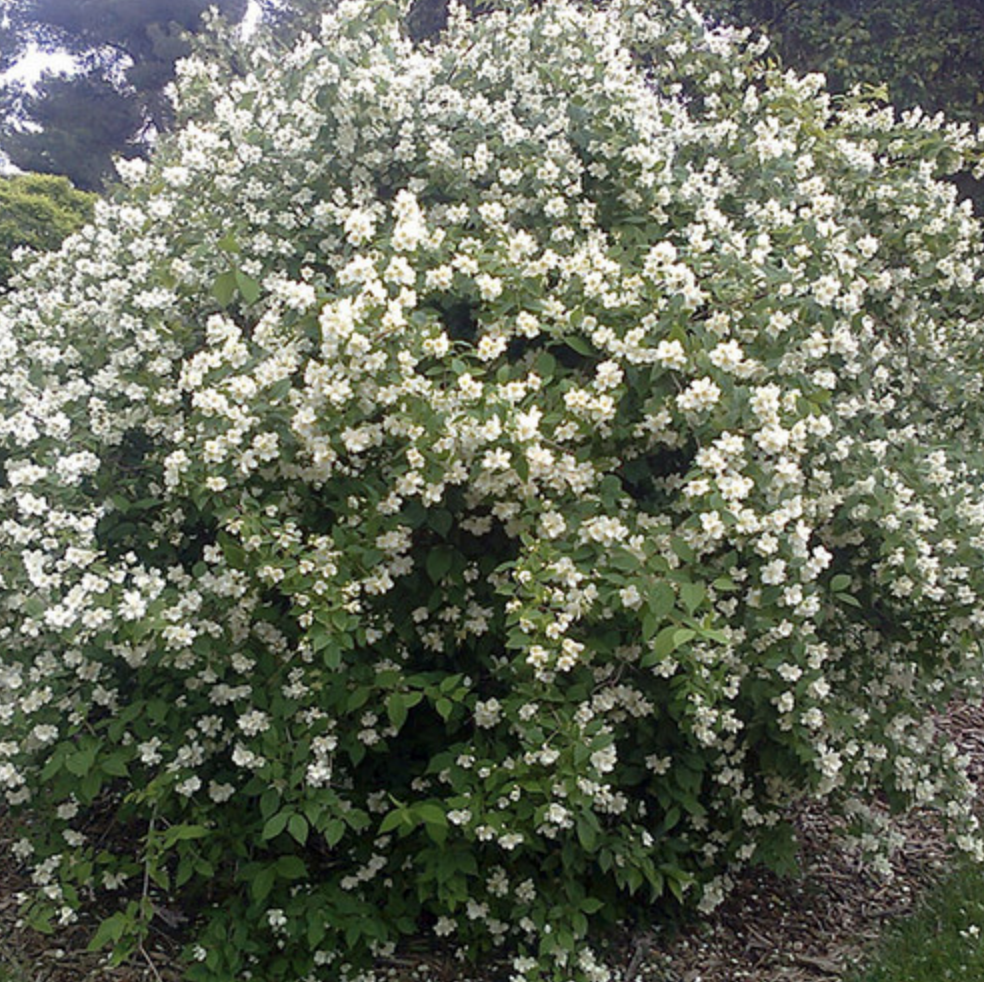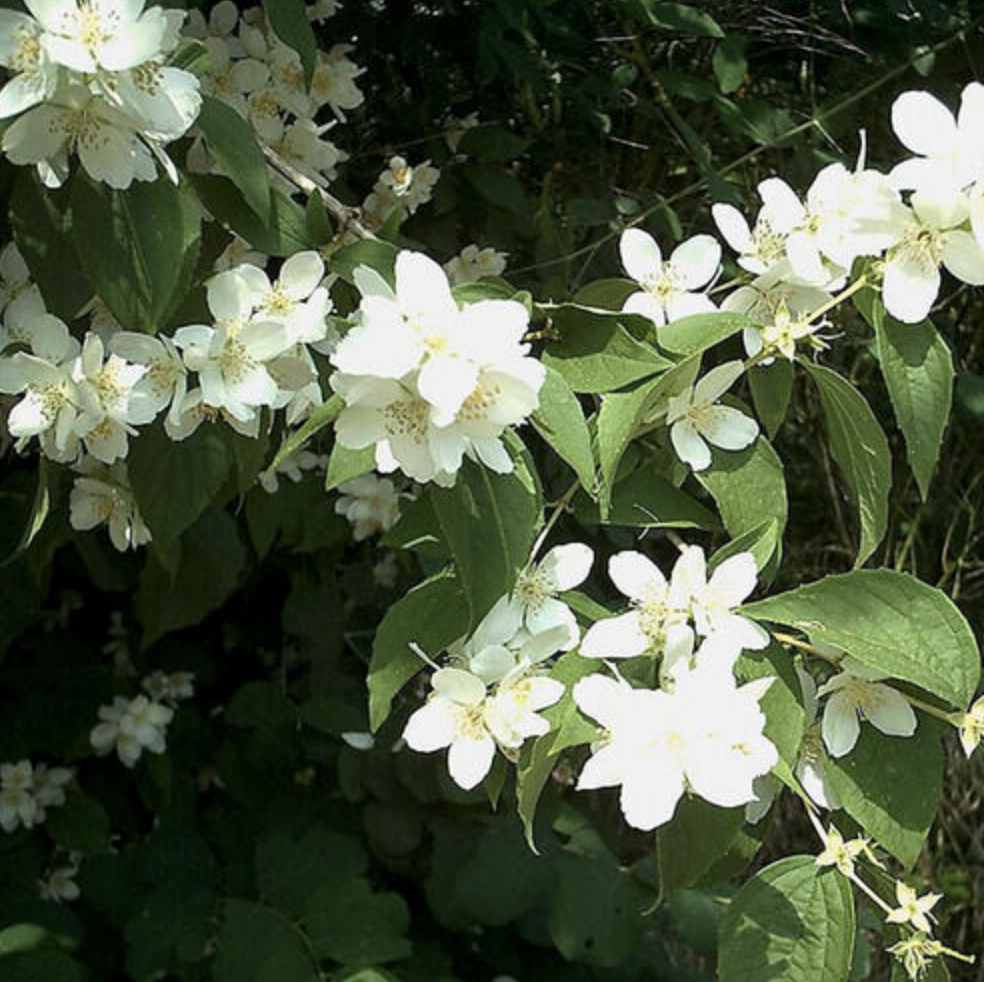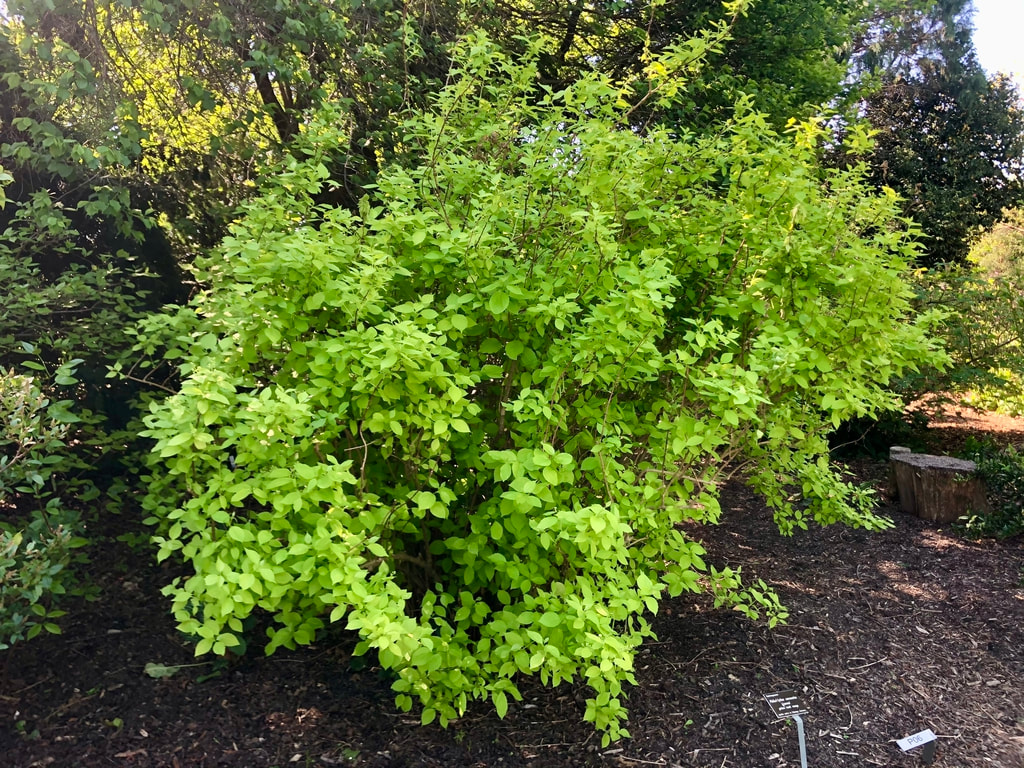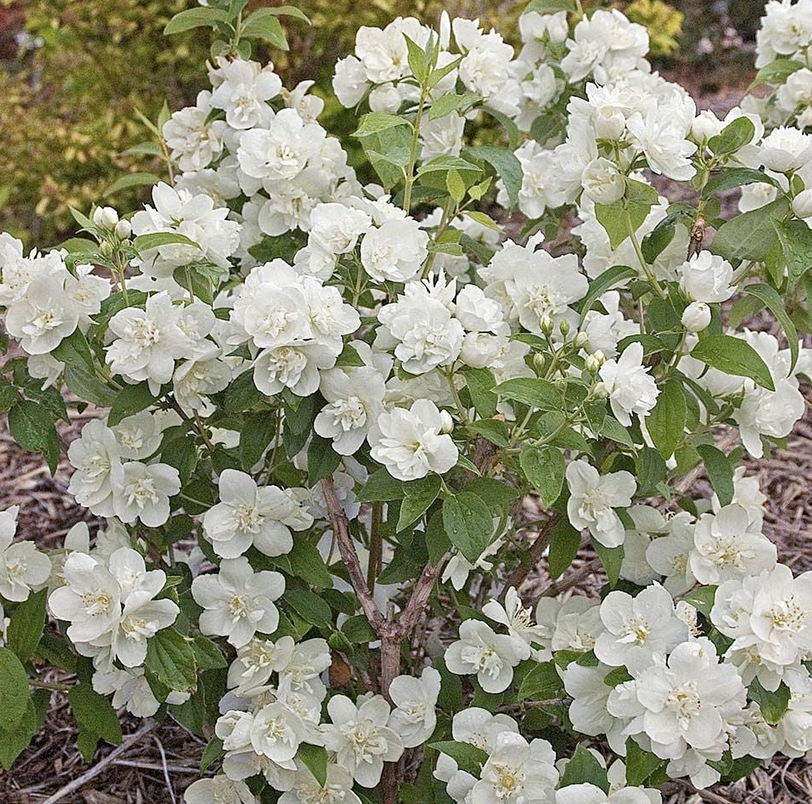|
By Matt Stevens, County Extension Director and Horticulture Agent, Pitt County In some ways, the plant world is no different from the worlds of music, fashion, and art. Things go in and out of style. Many plants that are common now weren’t often used in landscapes twenty or thirty years ago, while many that were more en vogue back then are rarely seen now. One such relic of landscapes past is the Mockorange (Philadelphus coronarius). In fact, it was already a bit of a relic 30 years ago when I started paying attention to plants.
you can enjoy its fragrance. Lastly, you’ll want that spot to also be somewhere that the Mockorange can hide amongst other plants after it has finished blooming and become less interesting. Mixed borders, where there are several different types of shrubs planted together, are good places to locate Mockorange. If placed on the back edge of such a border, you can walk along the back edge to enjoy the fragrance but view the border from the front during the remainder of the year. Though Mockorange is a bit of an old-time plant, a few newer hybrid cultivars have been introduced to the nursery trade. ‘Snow White Fantasy’ is a 5 foot-tall cultivar with double flowers. While double flowers are often less fragrant than single ones, ‘Snow White Fantasy’ has excellent fragrance. ‘Snowbelle’ is another double flowering variety with good fragrance that grows only to 3-4 feet tall. With their smaller size, either of these cultivars is a little easier to incorporate into the average landscape than is the standard mockorange. Additionally, ‘Icezam’ is a cultivar with white and green leaf variegation, and ‘Aureus’ has chartreuse-colored leaves. Their additional aesthetic characteristics and multi-season interest make ‘Icezam’ and ‘Aureus’ more appealing in modern landscapes than the standard Mockorange.
Matthew Stevens is the County Extension Director and Horticulture Agent for North Carolina Cooperative Extension’s Pitt County Center. If you have questions about this article or gardening in general, please contact the Pitt County Extension Master Gardener Infoline at 252-902-1705.
0 Comments
Leave a Reply. |
Matt Stevens
Pitt County Extension Director & Horticulture Agent Archives
July 2024
Categories |





 RSS Feed
RSS Feed